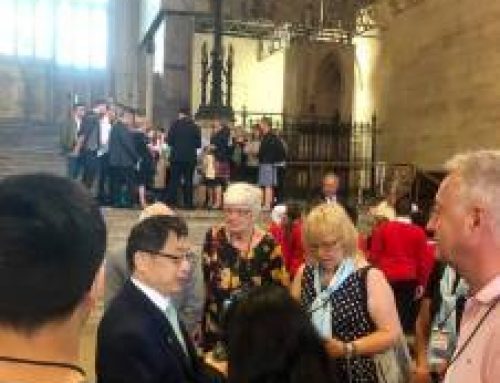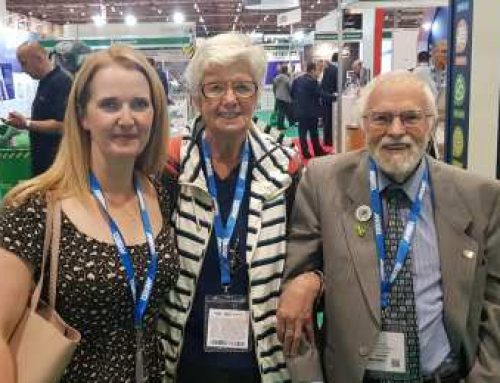Yesterday was a trip to London to the Houses of Parliament and easy journey
We arrived in plenty of time and would you believe it the queue to get through security was just Ray and I. Its never been like that so everyone dived on us to get us through. Coat off and in a tray, bag in another no belt to take off, that is the part Ray hates as his trousers start to fall down.
Then I walk through the scanner and it didn’t bleep this time.
I waited for my things to slowly go through well pleased I tided my handbag and pockets out before hand.
We had a coffee and met up with 2 more members of the Asbestos Sub Committee. Then up the staircase in the main hall.

Straight in to room 10 where all the committee was arriving.
We discussed points that was need to be raised in the main meeting in room 18 later.
Brown field sites cause such a problem with asbestos appearing in the soil.
Although the HSE (Health and Safety Executive) have published strict guidelines for the removal of asbestos, historically this was not the case. Even when the guidelines are adhered to, there is always the risk that asbestos is missed prior to building demolition, or improperly disposed of. Buildings demolished prior to the establishment of the Control of Asbestos Regulations are at particularly high risk of contaminating the ground around them.
If a building is demolished while asbestos is present, the asbestos materials may contaminate the ground. While it is undisturbed, the risk to the general public and those working on the site is low. However, once the ground is broken during construction, the fibres will become airborne and at this stage it becomes likely that anyone working on or around the site might be exposed to the asbestos fibres.
https://www.designingbuildings.co.uk/wiki/The_risk_of_asbestos_on_brownfield_sites
Professor Sir Anthony Newman Taylor is currently the Chairman of the Independent Medical Expert Group (IMEG) of the Armed Forces Compensation Scheme (AFCS). He is Professor of Occupational and Environmental Medicine at National Heart and Lung Institute (NHLI), Imperial College London and is currently Head of Research and Development at NHLI, a Trustee of the Rayne Foundation, Chairman of the Colt Foundation and a Non-Executive Director of Imperial College Healthcare NHS Trust.
He gave us a report of the National Mesothelioma Centre. The scale of the problem
The UK has the highest incidence of mesothelioma in the world. This aggressive form of cancer results in 2,500 deaths a year in the UK, and it is estimated that there will be 60,000 to 75,000 new cases by 2050. Mesothelioma is so prevalent in the UK in part due to the use of asbestos not being reduced earlier and our legacy of a large shipbuilding industry. In many cases spouses and children of those exposed to asbestos have developed the cancer through transfer of fibres on workers’ clothing. Asbestos exposure has put servicemen and women in the armed forces at particular risk. Asbestos exposure has an equally high risk of causing lung cancer, leading to a further 2,500 deaths each year. Lung cancer itself is the major cause of cancer death in the UK.
The Centre will benefit from:
A Bioinformatics Unit for handling and interpreting the complex genomic data will underpin this research.
Models of disease and eventually high-throughput screens for new drugs developed by the The Institute for Cancer Research (ICR) and NHLI
An early Phase Clinical Trials Unit that will match intensive provide chemo and biological therapies designed by Dr Sanjay Popat and Professor Dean Fennel (University of Leicester) and ICR/ The Royal Marsden.
Being part of a national network of a much wider range of clinical and research activities that are already active in the UK.
Patient and public engagement through existing clinical and patient networks including Mesothelioma UK and the June Hancock Trust. As well as regular meetings with patient interest groups and public lectures.
International engagement, in recognition of the fact that mesothelioma and lung cancers are problems that affect tens of thousands of people beyond the UK and that effective basic research into cancer has to be ambitious, involving hundreds or even thousands of patients. This is accomplished by multidisciplinary research through the collaborative programs with contributions from leaders and experts in several fields with access to the latest high technologies and data analysis platforms. Fostering data sharing, short and medium-term exchange of the best and brightest young research scientists, and raising international funding for ambitious joint genomic research.
Early diagnosis through state-of the CT and MRI imaging at The Royal Brompton and the Royal Marsden Hospitals and a novel program of research developed around diagnosis from the small specimens that are typically yielded by bronchoscopic and fine-needle biopsies. Successful application of the technology will allow repeated biopsies to follow the consequences of therapy and to amend treatment accordingly.
I was beginning to see where my Foundation will lean-to help out with raising money for research you just don’t realise what is going on until you sit in on these meetings.
Then there was an update on Diffuse Mesothelioma Payments Scheme. They have paid out 99 million pound so far—– Just ponder on that for a while, it’s a huge sum but that means a huge amount of mesothelioma sufferers.
But Because they are now finding more companies are insured it means the government has been able to recover 21 million back. So that went down well.
We need a equalisation of the 79/2008 Scheme payments for in-life and posthumous claims which isn’t fair for the widows of widowers.
Then the Veteran’s have no posthumous claims which is totally unfair.
A Report on the Forums court case against Cape was next but that is ongoing.
Then it was any other business where I was able to talk then. I was able to raise a question for the Mesowarriors over the defuse payment -Warriors cant claim for private drugs so the gap widens
My name was used in a test case as I have had good results.
So as we have won the test case to claim extra payment if needed for the dear drugs private only if you cant get on a trial and if you can sue a company,
My Point was received very favourably I suggested they set up a fund, that we that couldn’t claim, could tap into if we couldn’t get on a trial as these drugs are so dear. I said it would actually save the NHS money. Looking good.
This is Room 18 where we just put all the same points forward and that was it we all left to go home.
When we got to Victoria there were crowds waiting for the train as everything was delayed due to signalling problems. We had just missed our train and it turned out that our Ramsgate trains were running. We got in one on time but we had to travel so slow and also be detoured on a loop line.
We had a family with us. A young couple with a little girl and a baby boy who was long after his bed time.
They fed him and he was so sick. so his mum stripped him and wrapped him in a blanket.
We had a great chat about bringing up children and the problems of finding a house etc etc the time soon went.
We were right by the toilet and the door kept shutting and opening as people went in there much to the amusement of the little girl.
They got off and it went so quiet, We did get home 9.45pm







Leave A Comment